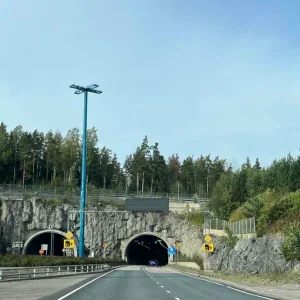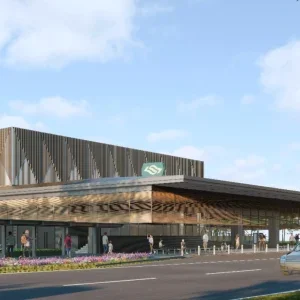The preferred bidder for the Brisbane airport link, involving a 5.25km long toll tunnel, is BrisConnections.
Under the contract, the consortium will design, build, finance, own and operate the link. Tunnelling between Bowen Hills and Toombul will involve combinations of shield, roadheader and cut and cover, to result in a total of almost 11.8km of underground ramps and tunnels.
Queensland state government awarded the contract to the consortium, which comprises Macquarie Capital Group, Thiess, John Holland, Arup and PB.
A joint venture of Thiess and John Holland is to undertake the design and construction of the link under a fixed-price, fixed term contract for completion by 2012.
The JV plans to use two TBMs at the Toombul section to drive south, and 11 roadheaders elsewhere. Spoil from the TBMs will be removed by conveyor to the Brisbane Airport Corp fill site. Roadheaders and two Herrenknecht TBMs are presently being used on the North-South link in the city (p25).
Operation and maintenance is to be undertaken by a separate JV of Thiess Services and John Holland Services. The contract will be fixed-price for an initial five-year term.
The airport link project is part of Brisbane City Council’s TransApex plan, and will operate as a 6.7km long electronic toll road. The scheme should cut travel time to the airport – 17 minutes by 2012, and 47 minutes by 2022.
The state government said the airport link will cost Aus$3.4bn (US$3.3bn) but the concession financing package means taxpayers will only have to contribute Aus$47M (US$46M).
The contract package also involves construction of a 3km long road (half in tunnel) between Windsor and Kedron on the Northern Busway, and a 750m long bridge at the airport.
BrisConnections is funding the project with debt and equity, and in addition to contributions from consortium members it is proposed to have an underwritten share offer later this year. The finance package has been put together by Macquarie Capital.
In total, the three projects are expected to cost Aus$4.8bn (US$4.7bn), including land, and Aus$4bn (US$3.9bn) excluding land. The government will contribute a total of Aus$1.5bn (US$1.47bn) – less than two-thirds of that expected.







